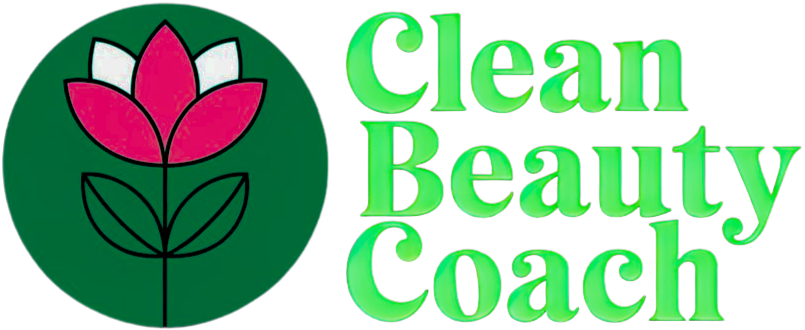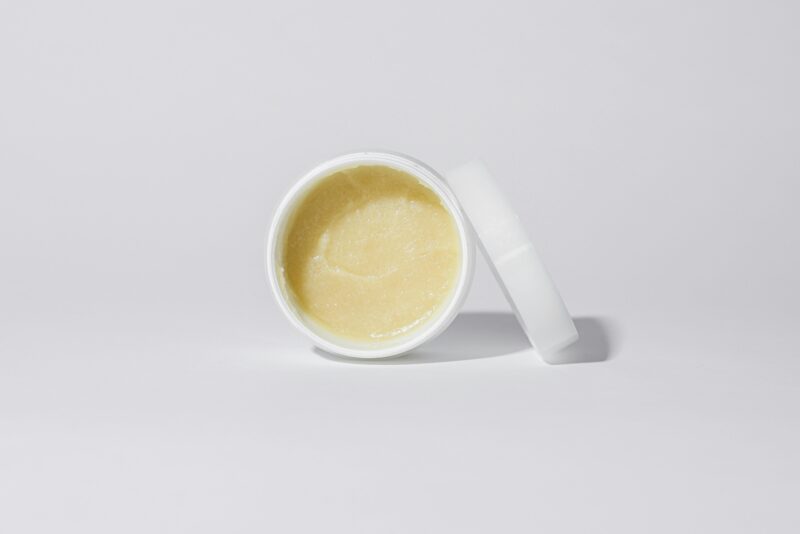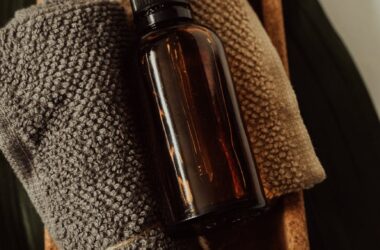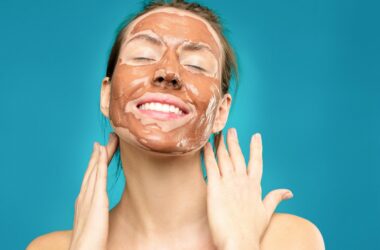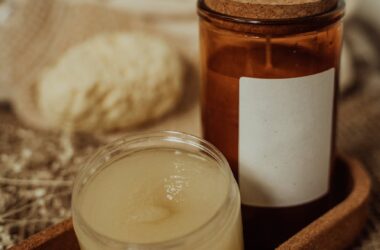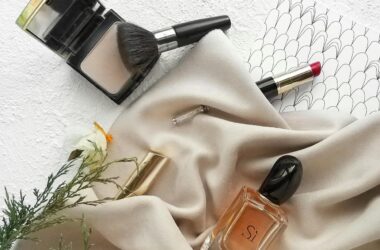Hyperpigmentation is a widespread dermatological condition that affects countless individuals worldwide, characterized by the darkening of specific skin regions due to excessive melanin production.
The manifestation of this condition can be attributed to numerous factors including prolonged sun exposure, hormonal fluctuations, post-inflammatory responses, aging, or genetic predispositions.
Finding effective treatments for hyperpigmentation remains a significant challenge in dermatology, with many sufferers turning to innovative solutions like snail mucin, which has gained considerable popularity in recent years.
This comprehensive article will examine the intricate relationship between snail mucin and hyperpigmentation, delving into the scientific mechanisms of skin darkening, the composition and therapeutic properties of snail secretions, potential efficacy against pigmentation disorders, possible adverse reactions, and alternative treatment options currently available in the market.
Understanding Hyperpigmentation: Causes, Types, and Manifestations
Hyperpigmentation occurs when melanocytes, the specialized cells responsible for melanin production, become hyperactive and deposit excess pigment in the skin’s upper layers.
This phenomenon can be triggered by a variety of external and internal factors, including ultraviolet radiation, inflammatory processes, hormonal imbalances, certain medications, and genetic factors.
Melasma, a form of hyperpigmentation commonly associated with hormonal changes during pregnancy or with oral contraceptive use, typically appears as symmetrical patches on the face, particularly affecting the cheeks, forehead, and upper lip.
Post-inflammatory hyperpigmentation (PIH) develops following skin injuries, inflammatory acne lesions, eczema, or other dermatological conditions that cause inflammation, appearing as flat, darkened patches ranging in color from pink to red, brown, or black depending on skin tone and depth of melanin deposits.
Solar lentigines, often referred to as age spots or liver spots, result from cumulative sun exposure over many years, manifesting as small, darkened spots typically found on areas frequently exposed to sunlight such as the face, hands, shoulders, and arms.
The severity and persistence of hyperpigmentation can vary greatly between individuals, with factors such as skin type, ethnic background, and the underlying cause playing significant roles in determining its appearance and response to treatment.
Individuals with darker skin tones (Fitzpatrick types IV-VI) are particularly susceptible to hyperpigmentation due to their naturally higher melanin content and more reactive melanocytes, making treatment approaches particularly nuanced for these populations.
The psychological impact of hyperpigmentation should not be underestimated, as studies have shown that visible skin conditions can significantly affect self-esteem, social interactions, and overall quality of life, highlighting the importance of finding effective management strategies.
The Origins and Composition of Snail Mucin in Skincare
Snail mucin, also known as snail secretion filtrate, has a rich historical background in traditional medicine dating back to ancient Greece, where Hippocrates reportedly recommended crushed snails mixed with sour milk as a remedy for skin inflammation.
The modern cosmetic use of snail mucin originated in Chile in the late 1980s when snail farmers noticed that their hands became remarkably soft and cuts healed quickly after handling the mollusks, leading to scientific investigation of the secretion’s properties.
This viscous substance is naturally produced by various species of land snails, particularly Cryptomphalus aspersa (garden snail), as a protective mechanism against cuts, bacteria, and UV radiation when the creature experiences stress or stimulation.
The extraction process typically involves stimulating snails in a controlled environment to produce mucin without harming the animals, followed by filtration and purification to create the ingredient used in cosmetic formulations.
The biochemical composition of snail mucin is remarkably complex, containing a sophisticated blend of glycoproteins, proteoglycans, glycolic acid, hyaluronic acid, copper peptides, antimicrobial peptides, and various growth factors that collectively contribute to its skincare benefits.
Allantoin, a component found in significant quantities in snail mucin, possesses keratolytic and moisturizing properties that promote cell proliferation and wound healing while simultaneously soothing irritated skin.
Glycosaminoglycans, particularly hyaluronic acid, serve as powerful humectants that attract and retain water molecules, providing intense hydration to the skin and creating a plumping effect that temporarily diminishes the appearance of fine lines and wrinkles.
The protein fraction of snail mucin includes collagen, elastin, and glycoproteins that may help reinforce the skin’s natural barrier function, potentially improving resilience against environmental stressors and preventing transepidermal water loss.
Antioxidant compounds present in the secretion, including vitamin E and C derivatives, offer protection against free radical damage, which is particularly relevant in the context of hyperpigmentation as oxidative stress can trigger melanogenesis.
The presence of natural exfoliating enzymes in snail mucin facilitates gentle removal of dead skin cells, potentially allowing for enhanced penetration of other beneficial ingredients and gradual improvement in skin texture and tone.
Scientific Evidence: Evaluating Snail Mucin’s Efficacy Against Hyperpigmentation
Despite the widespread popularity of snail mucin in cosmetic products, the scientific research specifically examining its effects on hyperpigmentation remains somewhat limited compared to more established depigmenting agents.
A 2015 in vitro study published in the International Journal of Molecular Sciences demonstrated that snail secretion extract exhibited inhibitory effects on melanogenesis through the suppression of tyrosinase activity, the key enzyme involved in melanin production.
Research conducted at the University of Nigeria in 2017 investigated the efficacy of a snail mucin-based cream on post-inflammatory hyperpigmentation, finding moderate improvement in study participants after 8 weeks of consistent application.
A comparative clinical trial conducted in South Korea evaluated the effects of a 10% snail secretion filtrate serum against a 2% hydroquinone cream (a gold standard treatment for hyperpigmentation), demonstrating that while the snail mucin preparation was less effective than hydroquinone, it showed measurable improvement with fewer side effects.
The antimicrobial properties of snail mucin may indirectly benefit hyperpigmentation by reducing inflammation associated with acne and other skin infections, potentially preventing the development of post-inflammatory hyperpigmentation.
The regenerative capabilities attributed to the growth factors present in snail mucin might accelerate cell turnover, theoretically allowing for faster resolution of existing hyperpigmentation as newer, unpigmented skin cells replace the affected ones.
Several peer-reviewed case studies have documented improvements in skin tone uniformity and reduction of dark spots with consistent application of snail mucin-containing products, though these reports acknowledge the need for larger, more controlled investigations.
It’s important to note that many commercial products combine snail mucin with other active ingredients known to target hyperpigmentation such as niacinamide, vitamin C, or alpha-hydroxy acids, making it difficult to isolate the specific contribution of snail mucin in these formulations.
Clinical evaluations suggest that the effects of snail mucin on hyperpigmentation may be cumulative and require consistent use over several months, with visible improvements typically not apparent until after 8-12 weeks of regular application.
The scientific community generally acknowledges that while promising, the current evidence base for snail mucin as a hyperpigmentation treatment would benefit from more robust, larger-scale clinical trials with standardized concentrations and application protocols.
Mechanisms of Action: How Snail Mucin May Address Hyperpigmentation
The potential efficacy of snail mucin against hyperpigmentation likely stems from multiple mechanisms working synergistically rather than a single pathway of action.
Glycolic acid naturally present in snail mucin functions as a mild alpha-hydroxy acid that gradually exfoliates the stratum corneum, potentially accelerating the shedding of melanin-laden keratinocytes from the skin’s surface.
The growth factors identified in snail secretions, including epidermal growth factor (EGF) and transforming growth factor-beta (TGF-β), may regulate melanocyte activity and influence the distribution of melanin within the epidermis.
Research suggests that certain peptides found in snail mucin might interfere with the cellular signaling required for melanin synthesis, potentially restricting the transfer of melanosomes (melanin-containing organelles) from melanocytes to keratinocytes.
The antioxidant properties of snail mucin could help neutralize reactive oxygen species that trigger melanogenesis as a defensive response to environmental damage, thereby indirectly reducing the stimulation of pigment production.
The copper peptides present in the secretion may promote wound healing and skin regeneration, potentially expediting the resolution of post-inflammatory hyperpigmentation by supporting healthy tissue repair processes.
Preliminary studies indicate that components within snail mucin might downregulate the expression of tyrosinase-related proteins (TRP-1 and TRP-2), which are essential enzymes in the melanin synthesis pathway.
The hydrating effect of hyaluronic acid and other moisturizing components in snail mucin improves overall skin health, potentially creating optimal conditions for natural depigmentation processes to occur more efficiently.
By strengthening the skin barrier function, snail mucin may reduce the inflammatory response to external triggers, potentially limiting the development of new hyperpigmentation, particularly in cases of sensitive or reactive skin types.
Some research suggests that glycoproteins in snail mucin may have mild retinol-like effects, potentially stimulating cellular turnover without the irritation commonly associated with traditional retinoids.
Application and Integration: Using Snail Mucin for Hyperpigmentation
Incorporating snail mucin into a skincare regimen targeting hyperpigmentation requires strategic placement within a comprehensive treatment approach for optimal results.
Concentration matters significantly when selecting snail mucin products, with most effective formulations containing at least 70-96% snail secretion filtrate, clearly indicated on the ingredient list as one of the first components.
The texture and formulation of snail mucin products range from lightweight essences and serums to richer creams and masks, with the selection dependent on individual skin type, climate conditions, and personal preference.
For addressing hyperpigmentation specifically, layerable products like essences or serums may offer advantages by allowing combination with other targeted treatments such as vitamin C or niacinamide for enhanced results.
The optimal application frequency appears to be twice daily, integrated into both morning and evening skincare routines, with consistency being paramount for achieving any noticeable improvement in hyperpigmentation.
A patch test is strongly recommended before full-face application, particularly for individuals with sensitive skin or allergies, as snail mucin may contain proteins that could potentially trigger reactions in some users.
Application technique involves applying snail mucin to clean, slightly damp skin to enhance absorption, followed by gentle patting motions rather than rubbing to ensure maximum penetration without irritation.
When treating hyperpigmentation, experts suggest focusing application on affected areas while still treating the entire face to maintain even skin tone and prevent the development of new pigmented spots.
Pairing snail mucin with broad-spectrum sun protection is absolutely essential, as UV exposure can exacerbate hyperpigmentation and counteract any benefits derived from treatment, regardless of the ingredients used.
Realistic expectations must be established regarding timeline for results, with most users needing to maintain consistent application for 8-12 weeks before evaluating efficacy, and understanding that complete resolution of hyperpigmentation may require combination therapy.
Potential Side Effects and Considerations
Although snail mucin is generally considered well-tolerated by most skin types, there are several important considerations regarding potential adverse reactions and contraindications.
Allergic reactions to snail mucin, while relatively rare, can manifest as redness, itching, burning, or hives, with individuals who have known allergies to mollusks or dustmites being at higher risk due to potential cross-reactivity.
The complex protein composition of snail mucin may occasionally trigger sensitivity reactions even in those without known allergies, necessitating immediate discontinuation if irritation develops.
Those with extremely sensitive or compromised skin barriers, such as individuals with active eczema flares or rosacea, should approach snail mucin with caution and consider consulting a dermatologist before incorporation into their routine.
Ethical considerations regarding the sourcing and production methods of snail mucin may be relevant for certain consumers, with cruelty-free certifications becoming increasingly important in the cosmetic industry.
Some formulations combine snail mucin with potentially irritating ingredients such as fragrances, essential oils, or high concentrations of acids, which may increase the risk of adverse reactions, particularly in the context of treating hyperpigmentation which can worsen with inflammation.
Pregnancy and lactation safety has not been comprehensively studied for topical snail mucin applications, suggesting a cautious approach for expectant or nursing mothers interested in these products.
The viscous texture of some snail mucin formulations may feel uncomfortable on certain skin types, particularly those prone to congestion or acne, making product selection important for adherence to the treatment regimen.
Potential interactions with other active ingredients commonly used for hyperpigmentation, such as hydroquinone, retinoids, or high-concentration vitamin C, have not been extensively investigated and may require careful introduction and monitoring.
Individual responses to snail mucin can vary significantly based on genetic factors, existing skin conditions, environmental exposures, and the specific formulation used, highlighting the personalized nature of skincare efficacy.
Alternative and Complementary Approaches to Treating Hyperpigmentation
The management of hyperpigmentation typically requires a multi-faceted approach, with numerous evidence-based alternatives available for those seeking options beyond or in addition to snail mucin.
Hydroquinone remains the gold standard prescription treatment for hyperpigmentation, working directly as a tyrosinase inhibitor to block melanin production, though concerns about potential side effects with long-term use have led to regulatory restrictions in some countries.
Retinoids, including tretinoin, adapalene, and over-the-counter retinol, accelerate cell turnover and inhibit melanin transfer, making them effective options for treating various forms of hyperpigmentation when used consistently.
Vitamin C serums, particularly those formulated with L-ascorbic acid at concentrations between 10-20%, offer potent antioxidant protection while inhibiting melanin production and brightening existing discoloration through multiple mechanisms.
Alpha and beta hydroxy acids (such as glycolic, lactic, and salicylic acids) provide chemical exfoliation that helps remove hyperpigmented surface cells while potentially inhibiting melanin formation in deeper layers.
Niacinamide (vitamin B3) has demonstrated impressive results in improving hyperpigmentation at concentrations of 4-5%, with studies showing it can reduce the transfer of melanosomes while providing anti-inflammatory benefits.
Tranexamic acid, initially developed as a hemostatic medication, has emerged as a promising topical treatment for melasma and other forms of hyperpigmentation due to its ability to inhibit plasmin activity involved in melanogenesis.
Azelaic acid, derived from grains such as barley and wheat, offers triple benefits for hyperpigmentation through its anti-inflammatory, anti-microbial, and tyrosinase-inhibiting properties.
Kojic acid, a byproduct of fermentation processes in certain fungi and foods like soy sauce and rice wine, effectively inhibits tyrosinase activity and has shown particular efficacy for post-inflammatory hyperpigmentation.
Professional treatments including chemical peels, microdermabrasion, laser therapy, and intense pulsed light (IPL) offer more aggressive options for treating resistant hyperpigmentation under the supervision of qualified dermatologists or estheticians.
Integrating Snail Mucin into a Comprehensive Hyperpigmentation Strategy
Addressing hyperpigmentation effectively often requires a strategic combination of treatments alongside consistent protective measures for optimal and sustained results.
A foundational first step in any hyperpigmentation management plan must be diligent sun protection, including broad-spectrum SPF 30-50 applied generously and reapplied every two hours when outdoors, as UV exposure can trigger new pigmentation and darken existing spots.
Snail mucin can be effectively integrated into a comprehensive regimen as a hydrating and potentially regenerative step, paired strategically with more established depigmenting agents for enhanced results.
A balanced approach might include using a vitamin C serum in the morning for antioxidant protection, followed by snail mucin for hydration and repair, then sunscreen as the final protective layer.
Evening routines could incorporate gentle cleansing followed by a targeted treatment such as retinoids or alpha hydroxy acids on alternating nights, with snail mucin applied subsequently to mitigate potential irritation and support the skin barrier.
Patients with persistent or severe hyperpigmentation should consider consultation with a board-certified dermatologist who can provide personalized treatment plans potentially including prescription-strength ingredients or in-office procedures.
Those with darker skin tones (Fitzpatrick IV-VI) should approach hyperpigmentation treatment with particular caution, as aggressive interventions can potentially worsen pigmentation through post-inflammatory mechanisms.
Consistency and patience remain crucial elements of any hyperpigmentation treatment plan, with most interventions requiring 8-12 weeks of regular use before significant improvements become apparent.
Photographic documentation of progress at monthly intervals can provide objective assessment of treatment efficacy and help maintain motivation during the often lengthy process of addressing hyperpigmentation.
Lifestyle factors including stress management, adequate sleep, and a balanced diet rich in antioxidants may complement topical interventions by reducing overall inflammation and supporting skin health from within.
Conclusion: Evaluating Snail Mucin’s Role in Hyperpigmentation Treatment
While snail mucin offers intriguing potential benefits for addressing hyperpigmentation, current scientific evidence suggests it may be most effective as a complementary treatment rather than a standalone solution.
The multifaceted composition of snail mucin provides several mechanisms that could theoretically benefit hyperpigmented skin, including mild exfoliation, antioxidant protection, regenerative properties, and potential tyrosinase inhibition.
For individuals seeking natural alternatives to conventional depigmenting agents or those who have experienced irritation with more aggressive treatments, snail mucin represents a gentle option worth consideration within a broader skincare strategy.
The hydrating and skin-barrier supporting properties of snail mucin make it particularly valuable as an adjunctive therapy alongside more potent but potentially irritating ingredients commonly used for hyperpigmentation.
When selecting snail mucin products, consumers should prioritize formulations with high concentrations of secretion filtrate, minimal irritating additives, and ethical sourcing practices for optimal results and peace of mind.
Realistic expectations must be maintained regarding the timeline and degree of improvement possible with snail mucin alone, with understanding that severe or longstanding hyperpigmentation may require more intensive interventions.
As research into snail mucin continues to evolve, future studies may provide more definitive evidence regarding optimal concentrations, formulations, and combination protocols specifically targeting different types of hyperpigmentation.
The decision to incorporate snail mucin into a hyperpigmentation treatment regimen should be based on individual skin needs, preferences, existing routine, budget considerations, and ideally, consultation with a skincare professional.
Whether used alone or in combination with other treatments, addressing hyperpigmentation requires commitment to a comprehensive approach that includes not only targeted interventions but also consistent sun protection and patience throughout the process.
For those intrigued by this natural ingredient with ancient origins and modern applications, snail mucin represents an interesting intersection of traditional wisdom and contemporary cosmetic science in the ongoing quest for clear, even-toned skin.

